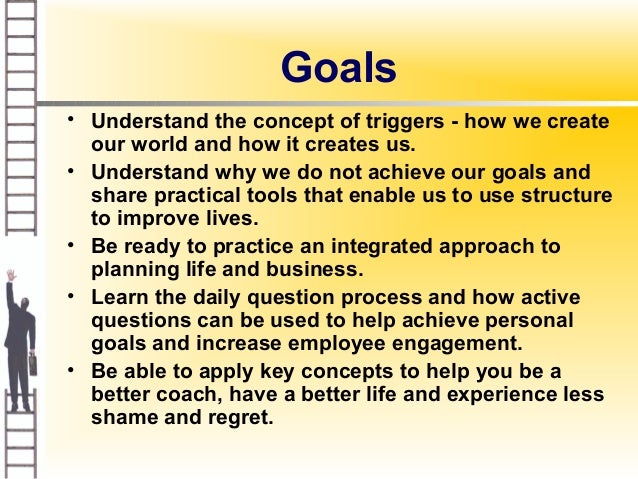1st Set the tone. If you’re initiating the relationship, establish
that coaching isn’t a sign that the other person is lacking in some critical skill or doing something wrong. In fact, coaching means that you see untapped potential in the other person and are invested in that person’s success at work.
2nd Establish the goals. You and the other person must
set the goals for the relationship. As the coach in the relationship, you have two responsibilities in goal setting. One is to identify the goals you would like to see the other person achieve. The other responsibility is to solicit from the other person what goals they want to work toward. Without your active solicitation, you may end up being the only person setting the goals, which moves you back to the boss/employee relationship.
3rd Set responsibilities. The two of you must then decide how you can help each other develop. As a coach, you have an additional responsibility beyond what you agree to in this part of the plan. You must also model the desired behaviours you want to see—you must “walk your talk.” If you don’t model the behaviour you want to help develop, then your credibility and your effectiveness as a coach are diminished.
4th Define the process. At a minimum, the two of you must decide when, where and how often you’ll meet to check in with each other. One caveat: coaching isn’t about friendship. You can be friendly, but coaching is about improving performance at work. As part of deciding how you’ll work together, you must also decide how you’ll address conflict (and there will be conflict).
5th Acknowledge what you will get. You’ll probably learn a great deal from the coaching relationship. Make sure that you acknowledge the benefits that you expect to get. For instance, being able to conduct “difficult” conversations (conversations that include criticism) is an invaluable skill. If you intend to develop that skill as part of this coaching relationship, point out that you will be using this opportunity to practice in a safe environment.
6th Establish benchmarks. The plan must include clear “measures of progress” and a schedule of when those measures will be met. Benchmarks provide both of you with markers to determine how well things are going. However, be aware that not reaching the benchmarks isn’t a sign of failure—it just means that a timetable adjustment or course correction may be needed.




